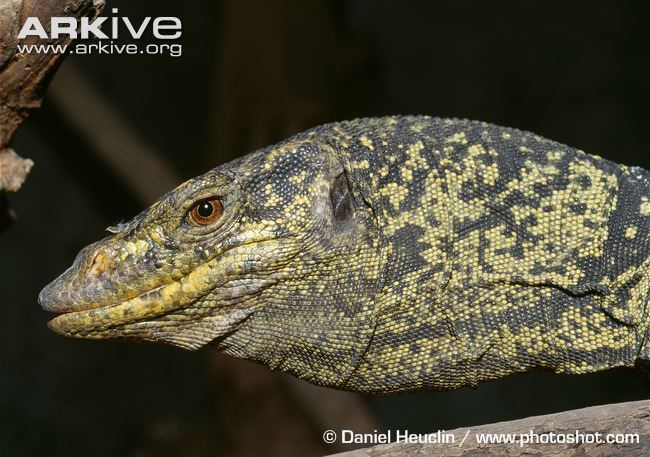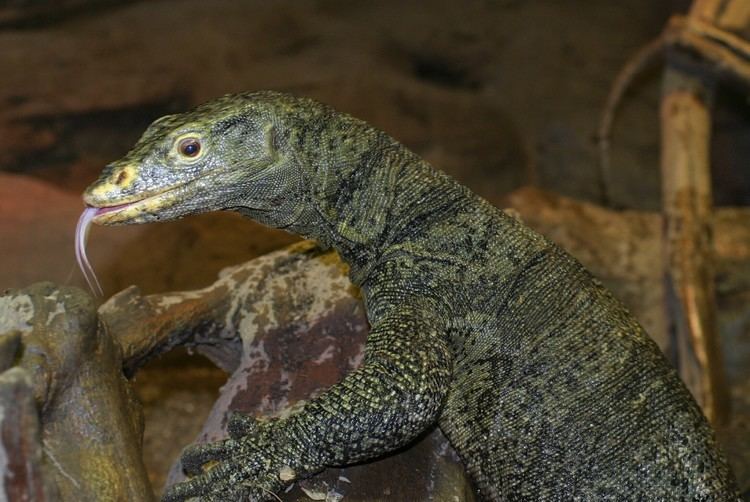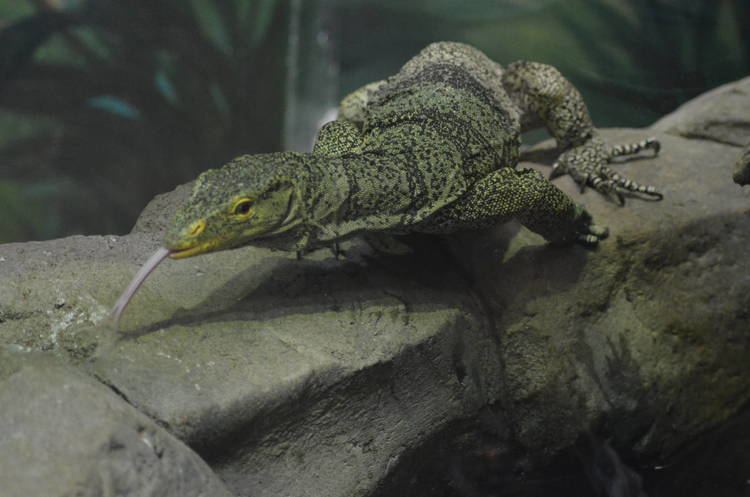Family Varanidae Scientific name Varanus olivaceus Rank Species | Phylum Chordata Suborder Lacertilia Genus Varanus Higher classification Monitor lizard | |
Similar Monitor lizard, Reptile, Panay monitor, Northern Sierra Madre for, Short‑tailed monitor | ||
Gray s monitor lizard
The Gray's monitor (Varanus olivaceus) is a large (180 cm, >9 kg) monitor lizard known only from lowland dipterocarp forest in southern Luzon, Catanduanes, and Polillo Island, all islands in the Philippines. It is also known as Gray's monitor lizard, butaan, and ornate monitor. It belongs to the subgenus Philippinosaurus. It is largely arboreal and extremely shy.
Contents

Gray s monitor lizard la zoo 2012
Diet

It is well known for its diet, which consists primarily of ripe fruit, especially Pandanus. A number of prey items are, however, also consumed, including snails, crabs, spiders, beetles, birds and eggs. Monitors are generally carnivorous animals, which makes the Gray's monitor somewhat of an exception amongst the varanid family. Such an unusual diet may be as a result of competition over food with the water monitors, which share their range. One of the only fruits readily eaten by this species in captivity is grapes, with these and fruit powder supplementing a captive diet of insects and rodents.
Reproduction

Details of the breeding habits of this species, certainly in the wild, are very limited due to the secretive nature of this species. The optimum egg-laying time for this species is known to be between July and October, when a clutch of up to 11 eggs will be laid. Rather than digging a nest, the most likely place for this species to lay eggs is thought to be in tree hollows, where they also spend much of their days resting. Young are often observed at their smallest in May to July, and as such estimates of incubation time lay at around 300 days. In captivity, however, incubation has been recorded over 219 days.
Threats

It is classed as vulnerable by the IUCN because most of its habitat has been destroyed over the last 60 years, and it is now thought to live in an area as small as 20,000 km², of which only around 2,000 km² are occupied by this species. It is thought that habitat destruction is not the only cause for the decreasing population trend, but that they are also still hunted for food and collected for the pet trade.
In captivity

This species is not widely kept in captivity, which is possibly partly because it is not generally bred successfully outside of the Philippines. This species is on display at the following zoos outside the Philippines:

There are two Philippine zoos which are successfully breeding this species, which are Avilon Zoo and Paradise Reptile Zoo, while the only report of a breeding outside of the Philippines was a single baby hatched at the Dallas Zoo in 1994. Dallas gave their two female monitors to the Oklahoma City Zoo in May 2013.
